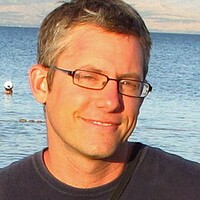Criss-crossing Jerusalem's parallel cities
Loading...
| Tel Aviv
Moments before a rock smashed through the window of his car in the center of the Palestinian Jerusalem neighborhood of Sur Baher, leaving a deep gash in the back of his neck, Israeli lawyer Daniel Seidemann remembers noticing the banners.
"I thought, 'Is it my imagination or are the flags greener here than before?'" he recalls. Green is the color most associated with political Islam, as well as Hamas, the Palestinian Islamist political party.
For more than two decades, Mr. Seidemann – an expert on municipal planning policy in East Jerusalem who has advised Israeli, Palestinian, and foreign governments – has traversed the Palestinian neighborhoods of the city through periods of uprising and calm.
He has represented both Israelis and Palestinians before the municipal planning board on issues of development, such as new Jewish settlements in East Jerusalem. He also runs an NGO which provides information to diplomats and world leaders on Jerusalem with the goal of promoting a two-state solution in the city.
Most Israelis consider the Palestinian parts of Jerusalem unsafe, but Seidemann has spent days in Jerusalem’s Shuafat refugee camp, a crowded slum monitored by the Israeli army. At the start of the Palestinian intifada in 2000, Palestinian officials called off a meeting at their former headquarters, Orient House, a few blocks into the Palestinian section of the city because they were worried for his safety.
Until that Saturday last month, which ended with him driving himself to a nearby hospital for stitches and treatment for a head concussion, Seidemann had counted just two close calls during all his years of such work.
The day after, prominent residents of Sur Baher made the one-mile trip to his home in the Jewish neighborhood of Arnona, crossing the invisible border into the part of Jerusalem recognized as part of Israel, to express their regrets.
Reflecting on the attack last week, Mr. Seidemann said he considers himself a casualty of a random act of violence in a neighborhood where extremism is growing. He sees the Islamist flags in Sur Baher as a sign of frustration amid a peace process that seems to be going nowhere, even though it has raised expectations. In recent weeks, Israeli police arrested a group of Palestinian youths who targeted and attacked Israeli motorists in the neighborhood.
Seidemann said he doubts his own attack was planned because it came during a moment of road congestion.
"Ninety-nine percent of the time I say, there’s no problem, and 1 percent of the time I say it’s too dangerous," he says, "and a small fraction of that 1 percent is when I make the mistake, and you get hit in the head.’’
Last Sunday, Mr. Seidemann finally decided it was time return to Sur Baher – but not to the center of the village where the attack occurred. Instead it was to visit a friend, a longtime employee of the municipal planning department, who lives on the edge of the village. The tension there needs to calm down before he goes back to the site of the attack, he says, insisting that eventually he will.
"Will I go back to the center of Sur Baher tomorrow? No. Will I continue the evaluate the calculated risks? Yes. It may take me three weeks, it may take me three months…. There’s no martyrdom in what I’m trying do."







